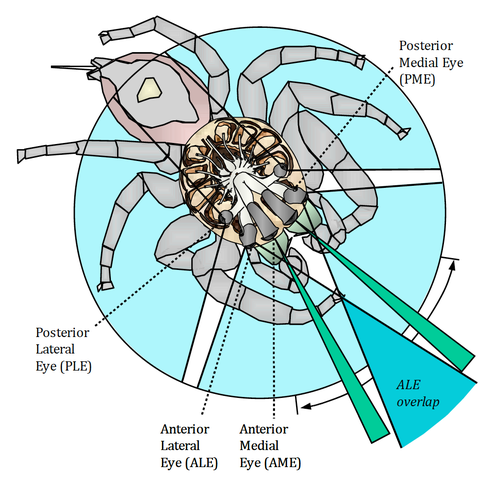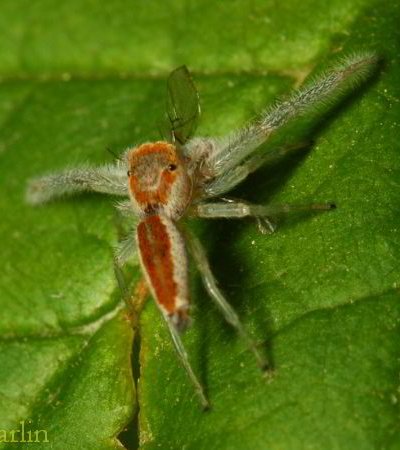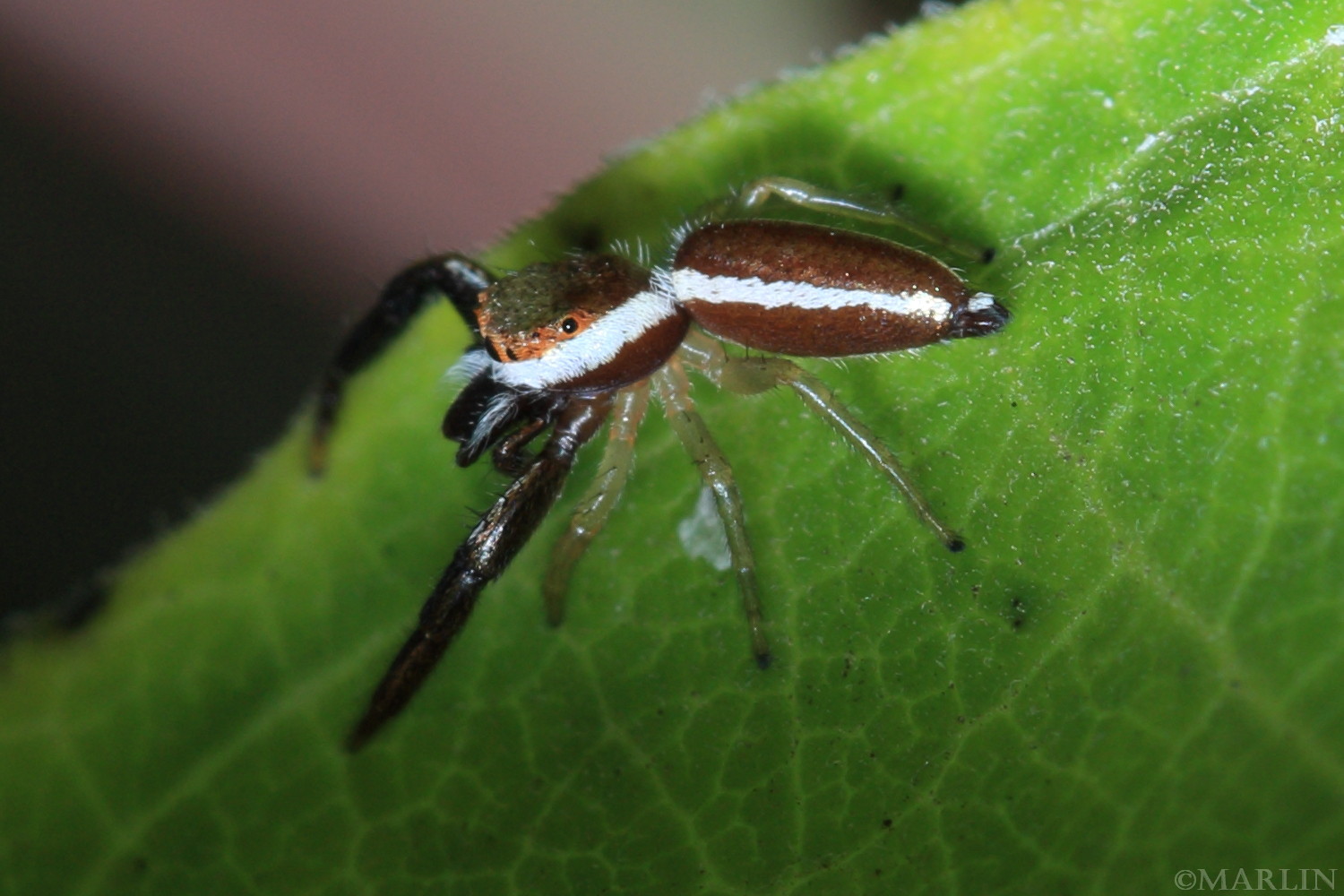Jumping Spider – Hentzia palmarum
Genus Hentzia is named for Nicholas Hentz (1797-1856), a French-born entomologist, engraver, and miniature painter (no, he was not himself miniature, you silly goose) who spoke several languages and studied medicine in Paris and at Harvard. He also authored several school textbooks, a treatise on the American alligator, novels, and numerous articles. His posthumous Spiders of the United States, a collection of scholarly articles, paintings, and drawings on the subject, long remained a standard in the field of arachnology. [3]
Born in Versaille, France, Hentz fled with his family in 1816. He eventually settled in Philadelphia, where he became a member of The American Academy of Natural Sciences and remained one until his death in Florida in 1856. He illustrated numerous articles published in their Journal, and he named over 100 different species of spiders, mostly in Salticidae. [3]
Being one of the first scientists to study and illustrate spiders, Hentz was a friend of Charles Alexandre Lesueur (1778-1846), president of the Academy of Natural Sciences of Philadelphia, and of the American Geological Society. Hentz also developed a productive collaboration and lasting friendship with Thomas Say (1787-1834), the putative father of American entomology. Say was a taxonomist, as were most of the early entomologists, and he described considerably more than 1,000 new species of beetles and over 400 insects of other orders, including species in every important insect order [4].
Say hoped Hentz would assist him in illustrating his own 3-volume American Entomology, or Descriptions of the Insects of North America, but distance prevented the successful conclusion of that project. [4]
Being ever the benevolent man he was, Hentz named one orbweaver spider species, Araneus thaddeus, after another of his friends and collaborators, Dr. Thaddeus William Harris, a noted American naturalist and entomologist.
 Note: the function of the posterior medial eyes is unknown [4]
Note: the function of the posterior medial eyes is unknown [4]
Jumping spiders have excellent vision, among the highest acuity in invertebrates. The eight eyes are grouped four on the face (the two big anterior median eyes in the middle, and two smaller anterior lateral eyes to the side), and four on top of the carapace. The two large, forward-facing eyes (AME) are tubular behind the lens, with a well-developed musculature, unique to salticids, that supports and moves the retina – the opposite arrangement of our own eyes. [1]
Spider musculature is also different from ours: in the spider, muscles operate from the inside to move external skeletal elements; our own skeletal muscles surround the elements they operate. But even these glaring differences are nothing compared to the jumping spider’s brain and digestive system – their esophagus passes right through the brain, and one branch of the gut actually sits on top of the eyes and brain. [3]
There are only four Hentzia species in eastern North America, and outside of Florida
and Southeastern Georgia, there are only two [1]: mitrata and palmarum (below)
 H. mitrata |
H. palmarum |
References
- Bugguide.net, Jumping Spider – Hentzia palmarum
- Jumping Spider Vision David Edwin Hill, Creative Commons Attribution 3.0 Unported license.
- Ewell Sale Stewart Library, Academy of Natural Sciences, Collection 971. N Marcellus Hentz Watercolors.
- Clark Kimberling, University of Evansville, “Thomas Say, Father of American Entomology”
Spiders Index | Spiders Main | Jumping Spiders | Orb Weavers | Nursery Web
Tree Encyclopedia / North American Insects & Spiders is dedicated to providing family-friendly educational
resources for our friends around the world through large images and macro photographs of flora and fauna.


